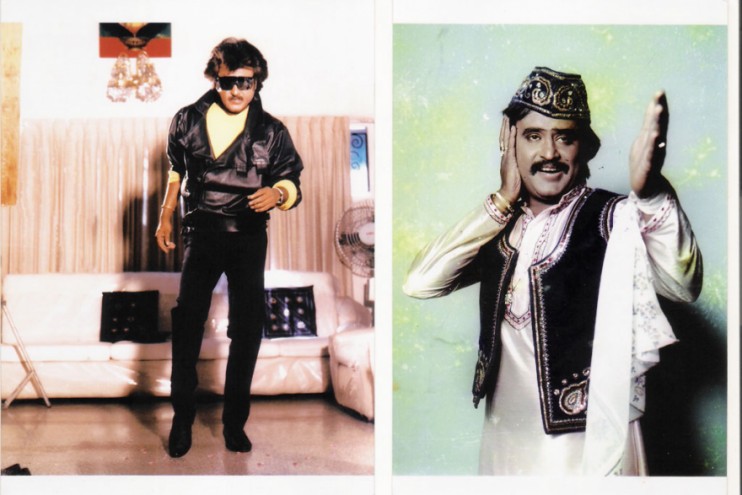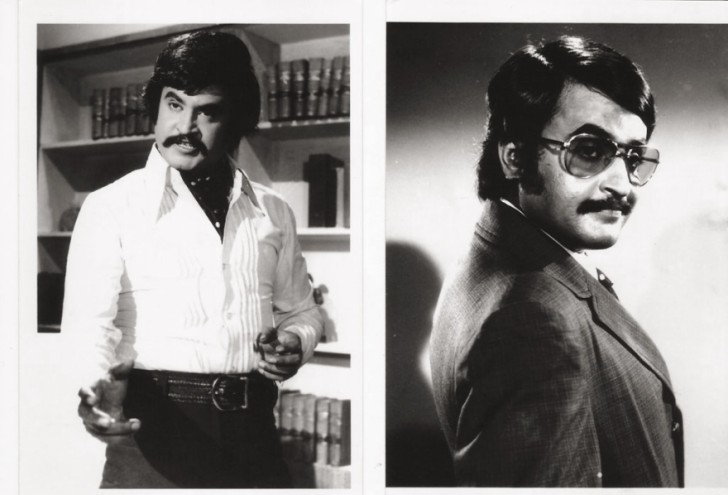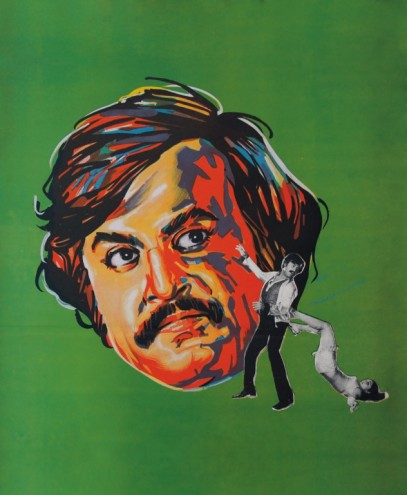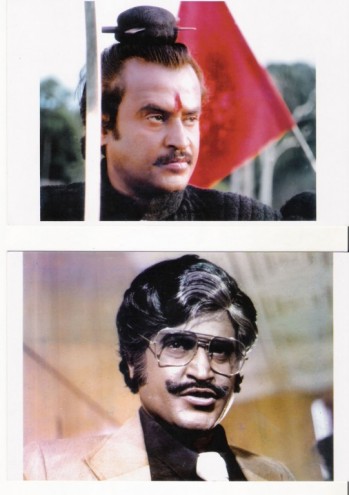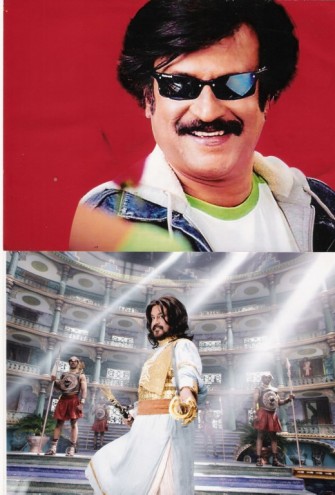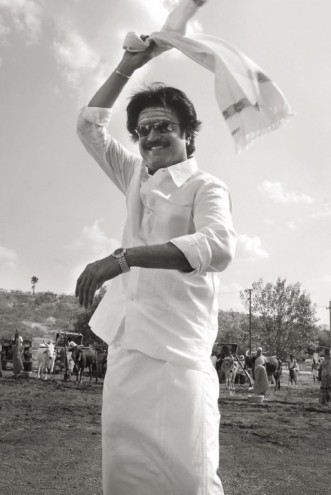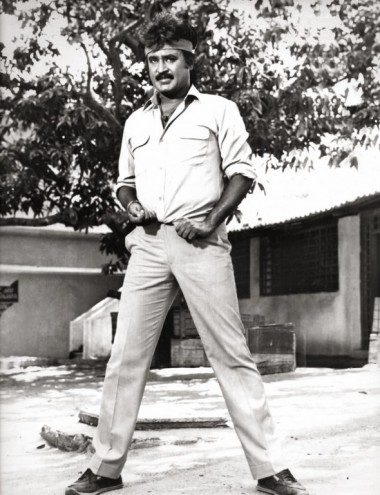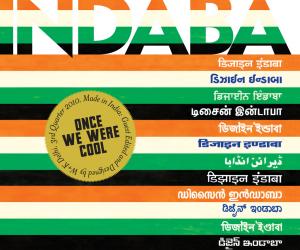First Published in
Internationally, Indian cinema has become synonymous with Bollywood, but the story of the country’s film industry would be half finished or rather lacking in colour and spirit if one missed out on Rajinikanth, superstar of the Tamil film industry.
Chennai, erstwhile Madras, is a coastal city in the south of India. It is home to Kollywood, Tamil language cinema, the second largest filmmaking centre in the nation with a long tradition of cinematic milestones.
While Bollywood is largely characterised by a rigid star system, the Tamil film industry is something of a cooler, freewheeling cousin – thanks to Rajinikanth.
The cult regional star has been generating love, loyalty and fervour not just across the subcontinent, but has also inspired a fan following that stretches into Japan – where his idiosyncratic style and trademark action moves have captured the imagination of the people.
That a partially bald, normal-looking man with visible wrinkles could be such an adored icon is a sort of enigma.
But in the south of India, where stardom is akin to idol worship, no film god is revered as much as Rajinikanth.
His fans venerate him with flowers whenever he appears on screen, they garland his billboards and have even been known to fashion bronze sculptures to sit in shrines alongside idols of other Hindu gods.
To measure his popularity in numbers is easy. Rajini, as he is often called, has 630 000 fan clubs around the world.
In South India, his massive fan following runs the gamut from the mostly poor to the middle income group to the style conscious cool kids.
The stories surrounding his celebrity are endless. From being something of a Pied Piper – devotees throng him when he walks the streets – to accounts of fans throwing knives at the cinema screen in a bid to aid his character. One story, perhaps highlights this blurring of celluloid and real life best: while filming a fight scene, 60 000 Rajinikanth fans burst into thunderous applause when he delivered winning fight moves – this particular account was likened to what the cheer would sound like if India won the World Cup.
Whether these stories are real or urban legend, his larger than life stardom is undeniable.
Part of the reason why he’s so popular is due to the honourable characters that he plays. He is often portrayed as a messiah of the plebeian, a hero with an undying goodness of spirit.
During his early days, Rajinikanth signed over a dozen movies which were all released within 18 months and most of them projected him as the action hero fighting the evil forces of society, falling in love with a young woman, dancing in gaudy sets, wearing bright coloured ill-fitting clothing and finally nabbing the villain in almost 20-minute-long action scenes.
A string of similarly formulaic blockbusters made him a phenomenon in which he perfected his unique style and persona.
His first notable performance was in Moondru Mudichu (1976) wherein he charmed audiences with what is now his signature cigarette trick – tossing a cigarette into the air and catching it in his lips – which heralds the start of a fight sequence, in which he always emerges victorious.
Typically, a Rajinikanth film is nothing more than fast-paced entertainment, peppered with thundering dialogue that often make no logical sense but has the energy to captivate the audience.
Rajinikanth fights aren’t a simple matter of guns and knives – he flings his deadly cotton handkerchief to slit throats, or he jumps to the top floor of a skyscraper from the ground, only to nab the villains in his movies. His stunts are undeniably over the top, but exude the kind machismo and style that South Indians have come to associate with him.
“One feels refreshed, recharged after watching a Rajinikanth movie. People come out of the cinema hall happy and this is the essence of his success,” says Malini Mannath, a film critic based in Chennai.
His movies run packed houses for months and people watch them more than once to memorise his lines, they record the action scenes and take notes while sitting in cinema halls to remember the sequence of Rajini’s stunts.
Unlike other popular Indian actors who, after years of playing the lover boy or the angry young man, shed their youthful image to move onto more mature roles, critics say Rajinikanth can still get away with anything; even at 60 he is pulling off the 25-year-old working class hero who quashes the villains and wins the heart of a beautiful heroine.
All is accepted when it comes to Rajinikanth – the worst script is turned into a great selling point with him in it and the weirdest gestures become the new style mantra for the youngsters. Rajini’s histrionics with coins, sunglasses, cigars, scarves, walking sticks and even with dinner plates, not to mention his signature move of flipping the cigarette, have been hailed like there was no tomorrow.
For his performance in Sivaji (2007), the 100-movie-old actor received 200 million rupees, making him the highest paid film star in India at the time.
South Indian film analysts say that the film was sold to 900 film distributors across India and other parts of the world with large Tamil populations – North America, the UK, Australia, Singapore, Malaysia and Sri Lanka. The movie was also released in Japan with subtitles.
Another reason why he is so charismatic, however, could boil down to his humble roots and his enduring humility. Starting out as a poor bus conductor in Bangalore with a penchant for acting, he struggled for years to make his way into the South Indian film industry. For many of his Tamil fans, he is like one of them, from his Dravidian looks to his off-screen regular guy persona.
Much unlike other famous actors, he does not endorse brands and unlike Bollywood stars, he avoids social networking sites – instead retaining a down-to-earth lifestyle – often spending time in prayer and regularly going on retreats to the Himalayas.
He keeps his family away from the media glare and rarely hosts parties for the film industry.
“Whenever his friends in the industry need financial help or if his movies fail to generate revenue then he refuses to take his fee,” says Mannath.
Even after his long life of success, his commitment to work and professionalism remains unparalleled.
With a clean, noncontroversial image both on the silver screen and in real life, Rajinikanth retains an indisputable aura and patronage that no other Indian actor can hope to match.
One Line Wonders
Rajinikanth films are packed with “punch dialogue” – out of context, nonsensical lines which the star has become known for. But the thumping delivery, often set to a loud musical score, is a lethal combination that South Indian audiences go wild for. Regional Tamil language magazines and radio stations regularly conduct competitions to predict possible Rajinikanth maxims. Here are some of his more memorable ones:
“En vazhi, thani vazhi.” (Padayappa, 1999)
“My way is a unique way.”
“Chumma adhirudulla?” (Sivaji, 2007)
“Doesn’t it just shake you up?”
“Idhu eppadi irukku?” (16 Vayathinile, 1977)
“How is that?”
“Naan late aa varuven, aana latesta varuven.” (Competition winner)
“I may be late, but I will be latest.”
“Naan solrathaiyum seiven, sollathathiyum seiven.” (Annamalai, 1992)
“I will do what I say. I will even do what I do not say.”
“Naan oru dhadavai sonna, nooru dhadavai sonna madhiri.” (Baasha, 1995)
“If I say it once, I’ve said it a hundred times.”
“Naan eppo varuven, eppadi varuvennu yarukkum theriyadhu, eppa varanamo appo correcta varuven.”(Muthu, 1995)
“When I will arrive, or how I will arrive, nobody will know, but I will arrive when I ought to.”
“Aandavan solran... Arunachalam mudickiran...” (Arunanchalam, 1997)
“God says it... Arunachalam executes it...”
Style Mannan (King of Style), Periya Thaliavar (Big Boss), Supernova and Superstar – Rajinikanth’s nicknames say it all.
Internationally, Indian cinema has become synonymous with Bollywood, but the story of the country’s film industry would be half finished or rather lacking in colour and spirit if one missed out on Rajinikanth, superstar of the Tamil film industry.
Chennai, erstwhile Madras, is a coastal city in the south of India. It is home to Kollywood, Tamil language cinema, the second largest filmmaking centre in the nation with a long tradition of cinematic milestones.
While Bollywood is largely characterised by a rigid star system, the Tamil film industry is something of a cooler, freewheeling cousin – thanks to Rajinikanth.
The cult regional star has been generating love, loyalty and fervour not just across the subcontinent, but has also inspired a fan following that stretches into Japan – where his idiosyncratic style and trademark action moves have captured the imagination of the people.
That a partially bald, normal-looking man with visible wrinkles could be such an adored icon is a sort of enigma.
But in the south of India, where stardom is akin to idol worship, no film god is revered as much as Rajinikanth.
His fans venerate him with flowers whenever he appears on screen, they garland his billboards and have even been known to fashion bronze sculptures to sit in shrines alongside idols of other Hindu gods.
To measure his popularity in numbers is easy. Rajini, as he is often called, has 630 000 fan clubs around the world.
In South India, his massive fan following runs the gamut from the mostly poor to the middle income group to the style conscious cool kids.
The stories surrounding his celebrity are endless. From being something of a Pied Piper – devotees throng him when he walks the streets – to accounts of fans throwing knives at the cinema screen in a bid to aid his character. One story, perhaps highlights this blurring of celluloid and real life best: while filming a fight scene, 60 000 Rajinikanth fans burst into thunderous applause when he delivered winning fight moves – this particular account was likened to what the cheer would sound like if India won the World Cup.
Whether these stories are real or urban legend, his larger than life stardom is undeniable.
Part of the reason why he’s so popular is due to the honourable characters that he plays. He is often portrayed as a messiah of the plebeian, a hero with an undying goodness of spirit.
During his early days, Rajinikanth signed over a dozen movies which were all released within 18 months and most of them projected him as the action hero fighting the evil forces of society, falling in love with a young woman, dancing in gaudy sets, wearing bright coloured ill-fitting clothing and finally nabbing the villain in almost 20-minute-long action scenes.
A string of similarly formulaic blockbusters made him a phenomenon in which he perfected his unique style and persona.
His first notable performance was in Moondru Mudichu (1976) wherein he charmed audiences with what is now his signature cigarette trick – tossing a cigarette into the air and catching it in his lips – which heralds the start of a fight sequence, in which he always emerges victorious.
Typically, a Rajinikanth film is nothing more than fast-paced entertainment, peppered with thundering dialogue that often make no logical sense but has the energy to captivate the audience.
Rajinikanth fights aren’t a simple matter of guns and knives – he flings his deadly cotton handkerchief to slit throats, or he jumps to the top floor of a skyscraper from the ground, only to nab the villains in his movies. His stunts are undeniably over the top, but exude the kind machismo and style that South Indians have come to associate with him.
“One feels refreshed, recharged after watching a Rajinikanth movie. People come out of the cinema hall happy and this is the essence of his success,” says Malini Mannath, a film critic based in Chennai.
His movies run packed houses for months and people watch them more than once to memorise his lines, they record the action scenes and take notes while sitting in cinema halls to remember the sequence of Rajini’s stunts.
Unlike other popular Indian actors who, after years of playing the lover boy or the angry young man, shed their youthful image to move onto more mature roles, critics say Rajinikanth can still get away with anything; even at 60 he is pulling off the 25-year-old working class hero who quashes the villains and wins the heart of a beautiful heroine.
All is accepted when it comes to Rajinikanth – the worst script is turned into a great selling point with him in it and the weirdest gestures become the new style mantra for the youngsters. Rajini’s histrionics with coins, sunglasses, cigars, scarves, walking sticks and even with dinner plates, not to mention his signature move of flipping the cigarette, have been hailed like there was no tomorrow.
For his performance in Sivaji (2007), the 100-movie-old actor received 200 million rupees, making him the highest paid film star in India at the time.
South Indian film analysts say that the film was sold to 900 film distributors across India and other parts of the world with large Tamil populations – North America, the UK, Australia, Singapore, Malaysia and Sri Lanka. The movie was also released in Japan with subtitles.
Another reason why he is so charismatic, however, could boil down to his humble roots and his enduring humility. Starting out as a poor bus conductor in Bangalore with a penchant for acting, he struggled for years to make his way into the South Indian film industry. For many of his Tamil fans, he is like one of them, from his Dravidian looks to his off-screen regular guy persona.
Much unlike other famous actors, he does not endorse brands and unlike Bollywood stars, he avoids social networking sites – instead retaining a down-to-earth lifestyle – often spending time in prayer and regularly going on retreats to the Himalayas.
He keeps his family away from the media glare and rarely hosts parties for the film industry.
“Whenever his friends in the industry need financial help or if his movies fail to generate revenue then he refuses to take his fee,” says Mannath.
Even after his long life of success, his commitment to work and professionalism remains unparalleled.
With a clean, noncontroversial image both on the silver screen and in real life, Rajinikanth retains an indisputable aura and patronage that no other Indian actor can hope to match.
One Line Wonders
Rajinikanth films are packed with “punch dialogue” – out of context, nonsensical lines which the star has become known for. But the thumping delivery, often set to a loud musical score, is a lethal combination that South Indian audiences go wild for. Regional Tamil language magazines and radio stations regularly conduct competitions to predict possible Rajinikanth maxims. Here are some of his more memorable ones:
“En vazhi, thani vazhi.” (Padayappa, 1999)
“My way is a unique way.”
“Chumma adhirudulla?” (Sivaji, 2007)
“Doesn’t it just shake you up?”
“Idhu eppadi irukku?” (16 Vayathinile, 1977)
“How is that?”
“Naan late aa varuven, aana latesta varuven.” (Competition winner)
“I may be late, but I will be latest.”
“Naan solrathaiyum seiven, sollathathiyum seiven.” (Annamalai, 1992)
“I will do what I say. I will even do what I do not say.”
“Naan oru dhadavai sonna, nooru dhadavai sonna madhiri.” (Baasha, 1995)
“If I say it once, I’ve said it a hundred times.”
“Naan eppo varuven, eppadi varuvennu yarukkum theriyadhu, eppa varanamo appo correcta varuven.”(Muthu, 1995)
“When I will arrive, or how I will arrive, nobody will know, but I will arrive when I ought to.”
“Aandavan solran... Arunachalam mudickiran...” (Arunanchalam, 1997)
“God says it... Arunachalam executes it...”

